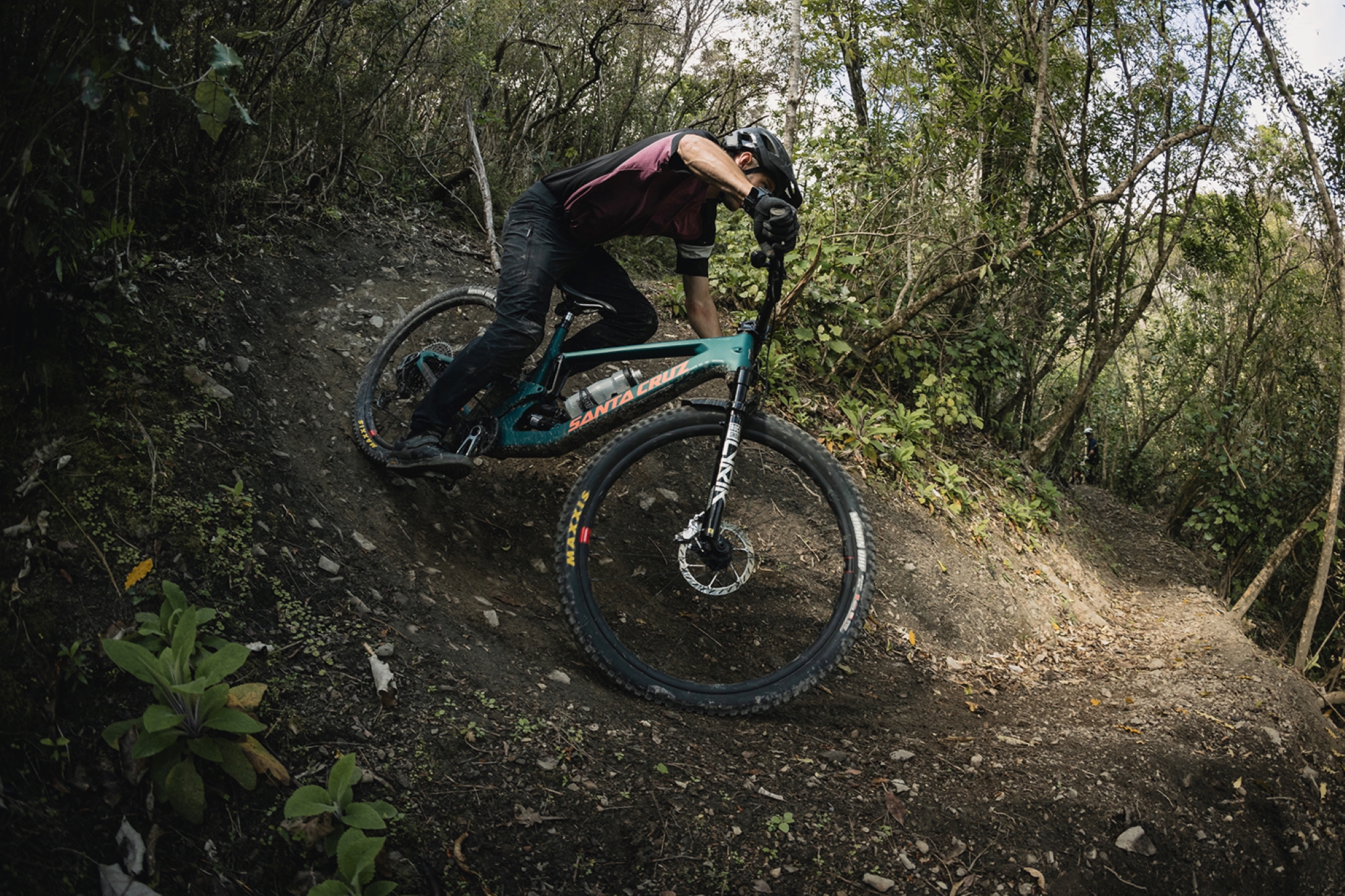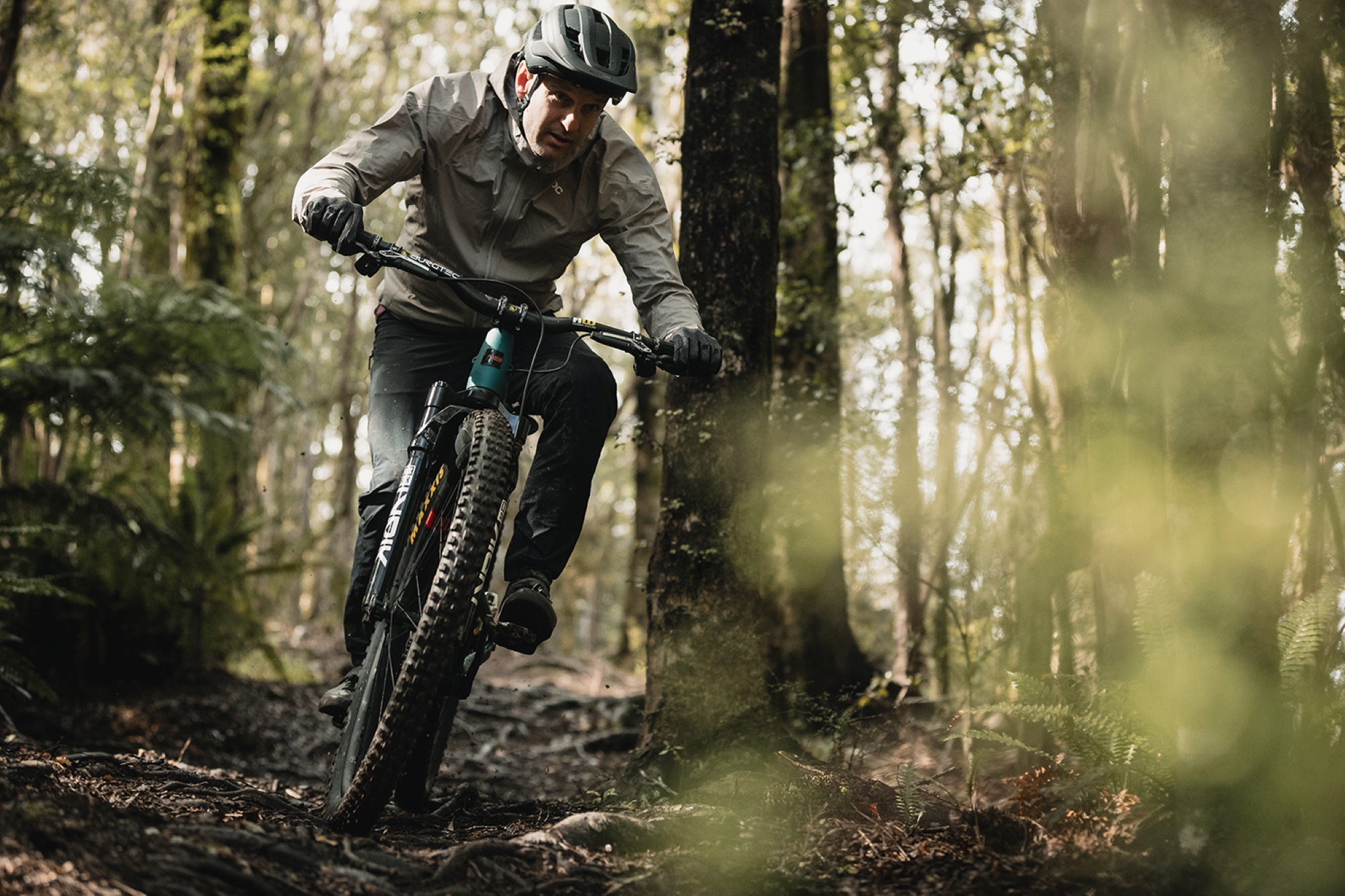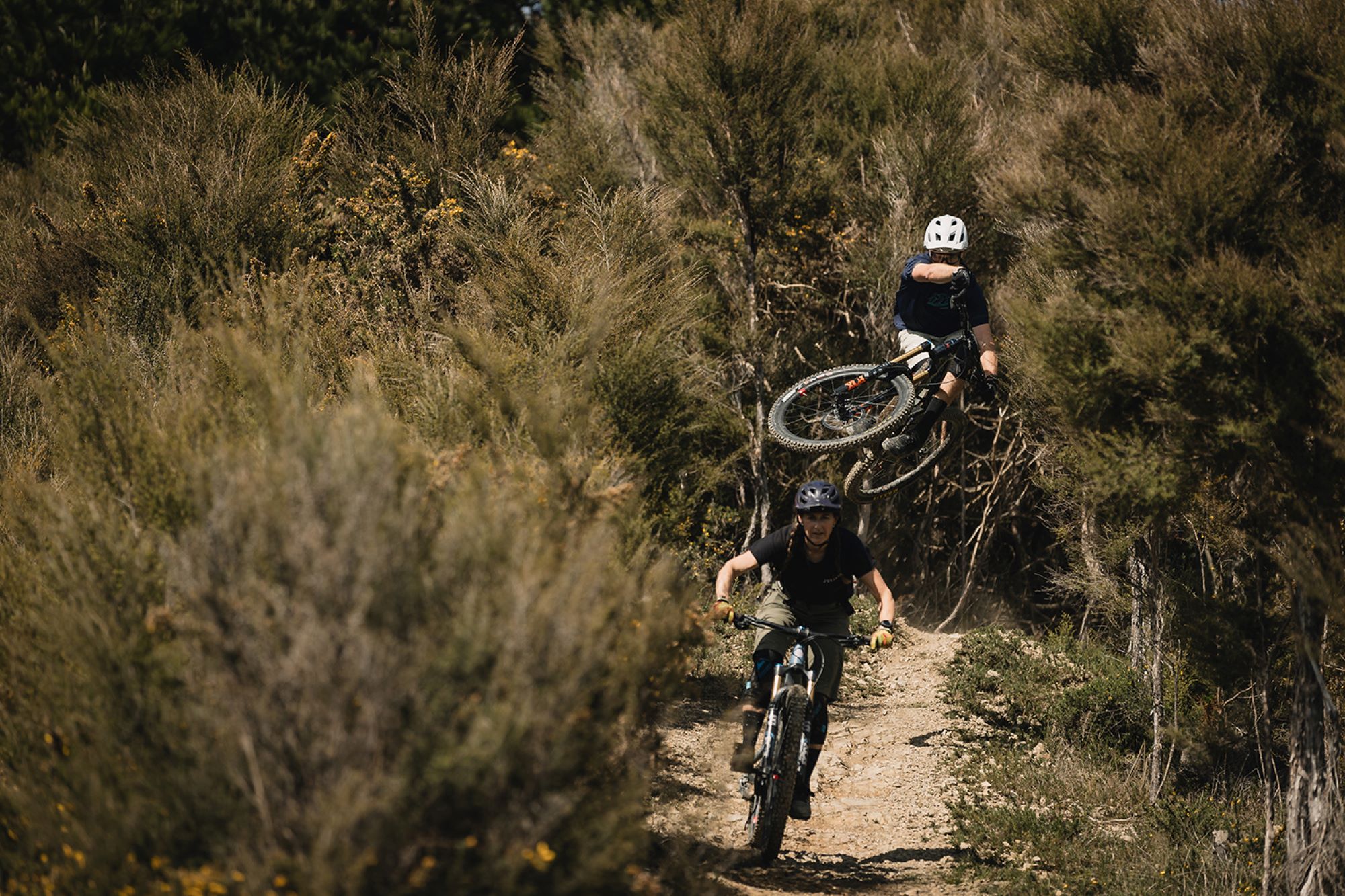Words Lester Perry
Images Cameron Mackenzie
Nelson’s Mammoth Enduro is now on the horizon and having visited Nelson in our last issue to check out some of the trails, now we’re diving into some specifics around the event and how you can get the most out of it.
Thanks to intel from the Nelson MTB Club events team, we now know we’ll be presented with a 60km route – 38km of this will be pedalled, the remainder shuttled. Six stages are accessed by roughly 1700m vertical of pedalled climbing combined with two shuttles, giving riders a total descent of over 2500 vertical metres of forearm-destroying race stages. The longest stage comes with a 723m descent over its 3.3km length. This will be gravity enduro at its finest.

Here’s how the race will shape up:
Monday 18 March 2024
Course released on Monday 18th March and trails open to ride.
Friday 22 March 2024
The course is open to practice. An ‘optional shuttle’ will be available to practice stage 1 only.
Saturday 23 March 2024
Shuttled Practice 8 am – 3 pm (2x shuttles)
Race Stage 1
Sunday 24 March 2024
Race Stages 2-6
2 x feed stations on the course
Two shuttles per rider and pedal between stages
Race Village is situated at the Maitai Hub and Golf Club rooms. Set times for lunch and shuttles. There will not be any time penalties for liaisons.

Nelson Trails don’t suffer fools. If your body or bike isn’t up to the task, the Mammoth will chew you up and spit you out onto one of its rock and root-strewn trails. Fortunately, there are a few low-key steps that can be taken to ensure you’re prepared for race day. Although Nelson’s toughest tracks can be tackled on a hardtail if the rider and bike are up to the task, the optimal bike for an event like the Mammoth is one with big travel and big brakes. You’ll likely have to run whatever is currently in the shed, so options may be limited, but given the choice, the ideal bike would have more than 150mm of travel front and rear, and grunty 4-piston brakes with fresh pads and large rotors to match.
Tyre setup is a constant topic of conversation leading into any enduro race. Width, tread pattern, casing thickness and rubber compound; there’s nothing like some good pre-race tyre chat. A big day like the Mammoth isn’t the time to be testing a new setup or rolling the dice by going for lightweight or rolling speed over durability. A common setup that will be up to par on Nelson’s gnarliest is large volume tyres, something around 2.4-2.5 inches with a dual-ply sidewall and, depending on how hard-charging you are, possibly fitted with tyre liners of some sort, either at both ends or just the rear. Punctures still happen, although a heavy-duty setup like this should drastically reduce the possibility of one. Put your mind at ease by getting your tyres sorted early.
Nelson riding is generally about controlling your speed rather than trying to generate it, so decent brakes are a must. Be sure to check your pads still have ample meat in them, and pack a spare set, in case of wet weather or a technical issue. Remember to check brake rotors, ensuring they’re at their ideal thickness to provide optimal stopping power. Regardless of how dialled your bike is, if you aren’t physically prepared, you won’t be able to make the most of your big day out. In the weeks leading into the event, it’s worth putting some focus on ensuring your body is up to the task. There’s a world of information online on how to prepare best, but at an elementary level; ensure you’ve done some long rides with lots of climbing on the bike you’ll race, adding in a couple of strength and core sessions a week will help you out (even bodyweight exercises are better than nothing) and closer to the event, a couple of interval sprint sessions a week should put the cherry on the top of your prep. Remember, doing something is better than doing nothing, and perfection isn’t what you’re chasing: “you can only do what you can do”. Your best bet is to do some research online to help determine what level of volume and specificity will suit you best. Worst case, just throw in some sets of push-ups while you’re out riding.
Fail to prepare, prepare to fail. Your body and bike can be well prepared but if you’re not ready for a mechanical issue, your day could be over as quick as it begins. Make sure you’ve got the essentials to repair your bike and get you home should you need to. At a minimum, we’d recommend carrying some tyre plugs, spare tubes, tyre levers, Allen keys, chain tool and spare chain link. For a more comprehensive kit, we’d add in some zip ties, a tubeless valve, a pair of brake pads, a second tube, a pocket knife with pliers, a $5 note or a piece of thin plastic to use as a tyre boot if you slash a tyre, as well as some gummy bears to bribe your fellow riders for the use of things you don’t have!
With the gradient and trail conditions that Mammoth riders will be tackling, when crashes inevitably happen, you’ll want to be somewhat self-sufficient to patch yourself up, rather than relying on the first aid team to be there when you need them. If you’re carrying a basic first aid kit, a minor flesh wound can be quickly blasted with saline, wrapped with a bandage, and on you go to the next stage.

We caught up with some previous winners and riders to see what makes a successful day for them when racing the Mammoth:
Kieran Bennett
The Mammoth has always been a big, tough event so there are a couple of points for me to make it successful.-
Preparation: It seems like a no-brainer but I’m not just talking about training. Researching the course and stages; understanding what your nutrition and hydration needs will be; making sure your equipment is dialled; and having necessary spares with you – along with a whole host of other stuff. Fail to prepare, prepare to fail.
Consistency during the race stages: The Mammoth is almost like a marathon rather than a sprint, trying to find a second or two on a sketchy line isn’t worth it if you’re risking a potential crash that could lose you 10-20 seconds. When you have 30+ minutes of race stages, consistency is king.
Amanda Pearce
For me, the Mammoth Enduro is arriving at the race village early in the morning, with the dew still fresh on the ground, struggling to hold down my breakfast with nerves of excitement and fear of what lies ahead. Things get real once you strap on your race plate and get loaded up for the shuttle to the start of stage 1. After some pre-race chat, it’s time for the first run of the day. Dropping in, it doesn’t take long for the anxiety to dissipate and race mode takes over. The day is finished off with an ice-cold beer and yarns with mates about what was – and the one that got away.
A successful day for me is more about the social side than the race side of things, and if I’ve had a good, fun day out with my friends, the result will be what it is.
Louise Kelly
The Mammoth Enduro is probably my favourite race. I always look forward to it, I don’t know if it’s the aspect of racing at home or knowing that it’s going to be a big day out on some of the best trails in NZ, but it is always a good time.
Mammoth was my first proper race when I started enduro racing in 2018. I had no idea of what I was in for, but it sent me down the full enduro racing path. Having a Mammoth win to my name is a cool achievement for me, every time the race rolls around again, I stop and reflect on where I started and how far I have come.
To be successful at the Mammoth Enduro, both you and your bike need to make it through without any mechanicals or crashes, stay well-fed and hydrated and come prepared for the toughest race day ever!
Kurt Lancaster
The best thing you can probably do to prepare for Mammoth is move to Nelson and practice all the tracks! If you’re coming from the North Island, the biggest thing to work on is probably bike set-up. You want your bike set-up as comfortable as possible because you’ve got these long, rough, rooty, backcountry beech forest descents. They’re not all like that but, generally, there will be two or three long beech forest stages.
Consider slightly less tyre pressure than if you’re used to riding hard-pack stuff. You want as much grip as possible. Cushcore (or similar) is key. I don’t run a cushcore on the front tyre, but one in the rear. I used to run downhill tyres; I run double-down casings now, but nothing less than that. In the dry, it’s pretty grippy but, especially in the wet, you could probably drop a few psi in your tyre pressure and even soften up your suspension more. There aren’t any bike-park-style jumps or anything, so you don’t need a super stiff setup.
With only one day’s practice, there’s no way in hell you’re going to learn all the trails, so I wouldn’t get too hung up on trying to remember every root or corner. You’re probably better off learning to read the terrain and the trail speed; don’t worry about the small details, just ride your bike, there are too many tracks and the hills are too big, the stages are simply too long to learn everything.
Relax, don’t “try” and ride. It’s a big day. Relax and concentrate on riding smart. You don’t want to crash on the first stage and be riding the whole day nursing an injury. Just ease into it.
Figure out what gear you’re going to take on the day before you arrive in Nelson. If you don’t like riding with a CamelBak, what are you going to use to carry hydration or gear? As far as nutrition goes, you’re going to have to carry a bit of food. You want to keep the food intake up so consider how you’ll carry this too.
Arm and hand strength is key, especially if you’re from the North Island – you’ll be in for a shock. The descents are a lot longer down here so figure out a way to train your arms and get used to riding fatigued.
There we have it, some tips and suggestions from those in the know for how to maximise a big day at the Mammoth Enduro – or any big day in the mountains.

While the Mammoth has a reputation as one of the most demanding enduro races in the nation, with some preparation it’s more than achievable. The controlled environment of a structured race is a great way to test yourself, learn new things and push yourself out of your comfort zone in a relatively safe environment. Haven’t done a big enduro before? Just remember: you’re capable of more than you think. Give it a nudge!
Head to Mammoth Enduro for more info.

